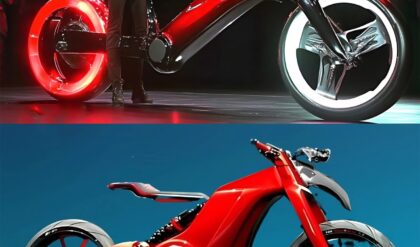
Robert Dillingham appears to be losing momentum in the draft process. In the Spurs Big Board 1.0, I had him ranked at the top of the pile. However, in the latest Spurs Big Board, he has slipped to the fourth spot.
What changed? First and foremost, the NBA combine wasn’t a success for the 19-year-old guard. While his height (6-foot-1 without shoes) and wingspan (6-foot-3) came in as expected, Dillingham weighed in at only 164 pounds. That’s a dozen pounds lighter than he was listed at the start of his freshman season at Kentucky and no other prospect at the combine weighed less. In fact, few players in the history of the combine have ever weighed less
Considering that Dillingham had to know that his weight would be a leading topic of conversation during his draft evaluation, scouts I’ve talked to are very concerned he came in so light. He has a small frame so it was always going to be an uphill battle for him to survive defensively in the NBA — and that was assuming he weighed somewhere between 175 and 180 pounds.
Dillingham also showed up at the combine nursing an ankle injury. While that’s not a big deal in the grand scheme of things, he hasn’t been able to complete his athletic testing yet. Just ask Reed Sheppard how his 42-inch vertical helped quiet the talk about his other forgettable measurements at the combine.
Additionally, from San Antonio’s perspective, the draft order changed the calculus of their drafting strategy. With so few teams in the top seven needing a point guard, waiting to select a point guard with their pick at No. 8 makes a lot more sense than it did prior to the juggling of the ping pong balls.
The Case for Drafting Robert Dillingham
Dillingham is a fantastic prospect when it comes to projecting his ability to score the ball. His three-point shooting, specifically, really stands out. A 44.4% three-point shooter at Kentucky, he can shoot off the dribble, off of movement or simply off the catch. His ability to relocate at breathtaking speed and then get up a three-pointer before the defense can react is a weapon that makes him a tantalizing option for the Spurs.
With or without the ball, Dillingham’s quickness is elite. He can change directions in the blink of an eye and his really good touch from a variety of angles. As a freshman, he averaged 15.2 points in only 23.3 minutes per game — and did so very efficiently.
His playmaking ability is more difficult to judge. We know he can score the ball but is he a true point guard? He definitely shows flashes of being able to create shots for others. He knows how to weaponize his speed to break down a defense. I wouldn’t say he has elite court vision but he’s definitely more unselfish than advertised.
As for how he’d fit with Victor Wembanyama, I don’t see how it could go wrong on the offensive end of the court. Dillingham is really good on the ball and might be even more dangerous away from the ball. Adding a three-point threat who will also be a deadly movement shooter will do nothing but make Wembanyama’s life easier.
The Case Against Drafting Robert Dillingham
Defense. How is Dillingham going to defend in the NBA? That was a difficult question to answer before he weighed 164 pounds at the combine. Now that it’s known just how tiny Dillingham is, there’s really not much hope that he’ll ever be even league average in that category.
At Kentucky, the freshman fouled a lot, was consistently out of position and was just overwhelmed by any sort of size. As a professional, Dillingham is always going to be in danger of being a liability when he’s on the court. There’s just no way around that fact considering he’s both small and lacks innate defensive instincts.
Dillingham plays with effort so there’s hope that he won’t be a total sieve on the defensive end. But even at his best, any team that drafts him has to know that he’s a virtual lock to be in the bottom 20% of NBA defenders.
Is his offense enough to justify the looming defensive issues? Perhaps. But the fact that he’s not a top-tier playmaker causes a lot to ride on his ability to shoot and score the ball at a high level. Any bumps in the road he faces on the offensive end would be magnified.
Robert Dillingham’s Fit on the Spurs
Dillingham would surely start the year as the backup point guard as he learns the ins and outs of defense on the NBA level. If he can learn how to adequately defend and his offensive skills translate, he’d then move into the starting lineup.
But there are also scenarios where Dillingham is a full-time reserve in the NBA. Ending up with a spark plug type player with a lottery pick might be a difficult pill to swallow — but that’s a very real outcome when drafting a small player in today’s association. That said, there can be very real value in a microwave scorer from off the bench — so not all would be lost in those less than ideal scenarios.
Final Thoughts on the Spurs Drafting Robert Dillingham
I have to admit that adding someone of Dillingham’s skill set would be exciting. The Spurs struggled more offensively than defensively last season so it’s easy to make the argument that adding a dynamic scorer like Dillingham is worth the risks — even if he only ends up being a bench player.
At this point, I’d be surprised if Dillingham is San Antonio’s pick at No. 4. However, if he’s still on the board at No. 8, I think there’s a decent to good chance that he’d be the pick.





